It's always a bit embarrassing to have to admit it, but it's true: at Top Gear we don't know everything. For example, I do not know the complete topographical history of the world rally championship by heart. This work takes us to special locations and every now and then I find myself on a beautiful road in the south of Europe, only to discover afterwards that it was part of one of the legendary rallies that took place here in the heyday of the sport were held.
No doubt there are a multitude of places where I never realized that in the first place. What I do know is that Audi brought about a true rally revolution in the early 1980s with the introduction of the quattro. Four-wheel drive was always something for clumsy off-road vehicles – until the Germans built it in a small sports coupe and made all rear-wheel drive opponents look like a fool.
The discovery of quattro coincided with the rise of that other pillar in Audi's existence: the five-cylinder. Today I'm eating a Nutella pancake in the Hôtel des Trois Vallées – which also serves as a rally museum – and there are several matured Audis outside ready for a noisy party.
I know this piece of rally history
The motorsport history of the road to here is not even lost on me. The Col de Turini is part of the famous Rallye Monte-Carlo, and I previously drove it with an Audi TT RS. Five-cylinder, turbo, four tortured wheels: triple check. The little compartment actually charged upwards in a mad dance with the asphalt, swinging from left to right. The idea is that I will now discover how it got to this point.

First let's put the predecessor of the TT RS through its paces
'Turbo' is written on the thin, 40-year-old steering wheel. I turn it carefully and almost fall out of the soft, luxurious driver's seat. I just started the engine of the Audi 200 5T 'Typ 43' from 1981. Its morning roar – and oil temperature gauge – tell me that it is not really ready for operation yet. An attendant in an RS 3 precedes me; apparently he was not told that the factory classics on site have not moved yet today.
With due respect for the equipment, I try to follow the best man as he descends the Alp with enthusiasm. In the meantime, I'm checking what kind of meat I have in the tub: 2.1 liters, 170 hp, 1,260 kilos. Sounds like the specifications of a sports car, but the 200 is really a large, rocking limousine. Complete with green carpet and brilliant black and white chessboard upholstery.
What does this 200 do in the quattro story?
This Audi is pre-quattro, but essential in the development of the famous five-cylinder engine, which was first installed in the 100 in 1976. When the brand came up with a prestigious engine for a new range of luxury sedans, a six-cylinder proved to be a difficult challenge in terms of space and weight – so they developed this engine based on Volkswagen's EA827 four-cylinder. In 1979, the engineers added a turbo for the 200, the top model at the time. I now control the result.
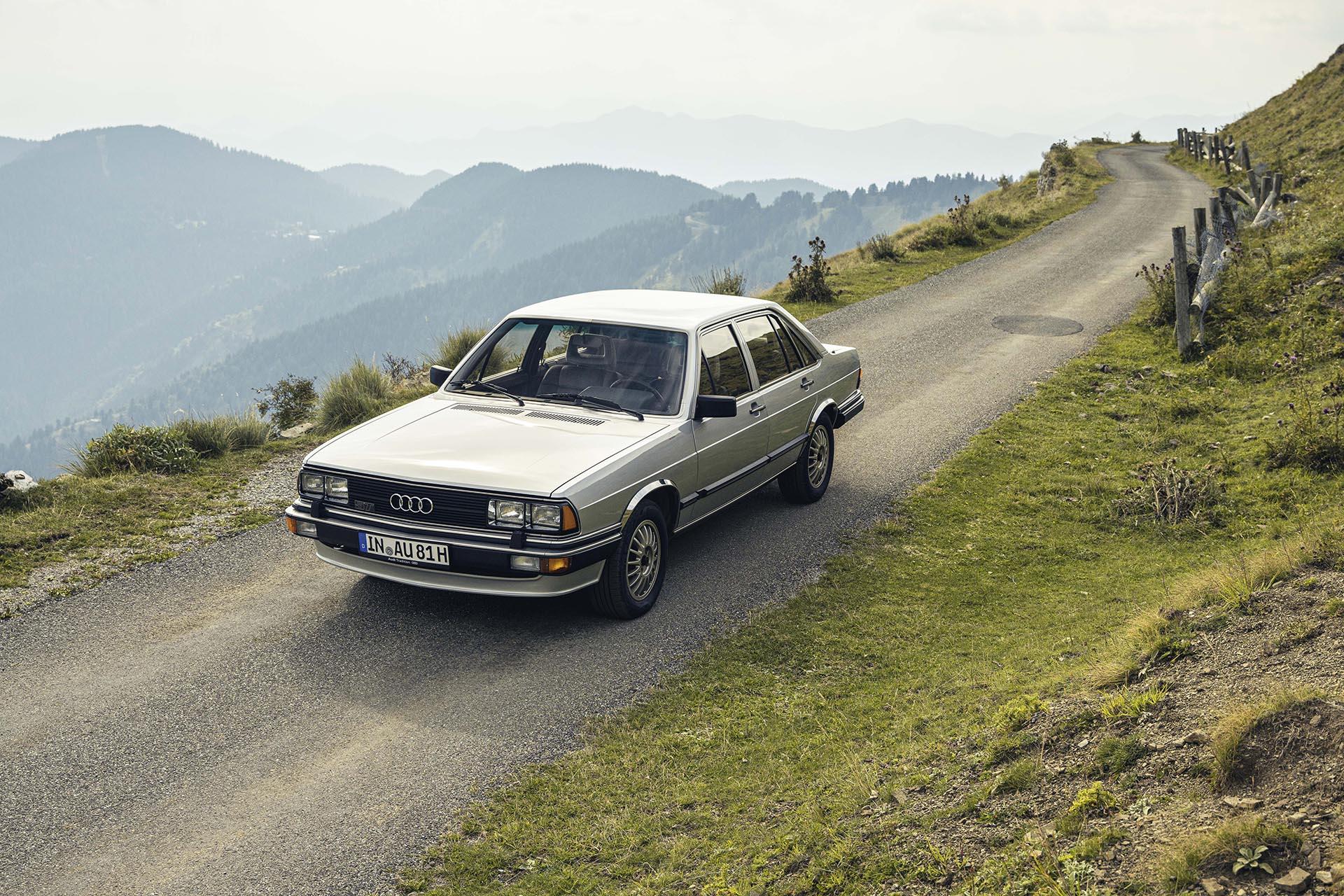

As things warm up, the mental eggshells roll out from under the accelerator. The first time I press it a little longer and deeper, I get a bit of a shock: at 3,000 rpm there is suddenly that not too subtle turbo. You feel it swell, hear it coil up, after which you are propelled forward with modest force. The steering appears to be quite involved in the action, in contrast to the three-speed automatic transmission and the soft chassis. But this engine character in a car like this – it must have given a surprising thrill at the time.
On to the first quattro for the street
Then I change into Audi's (already warmed up) poster car: a bright red quattro, complete with eightiesgraphics on the doors. This copy is seven years newer than the 200 and has a completely different approach. The quattro was the sports coupe with which you associated the rally activities, and which in a sense had to carry the proud technical advance of the brand.
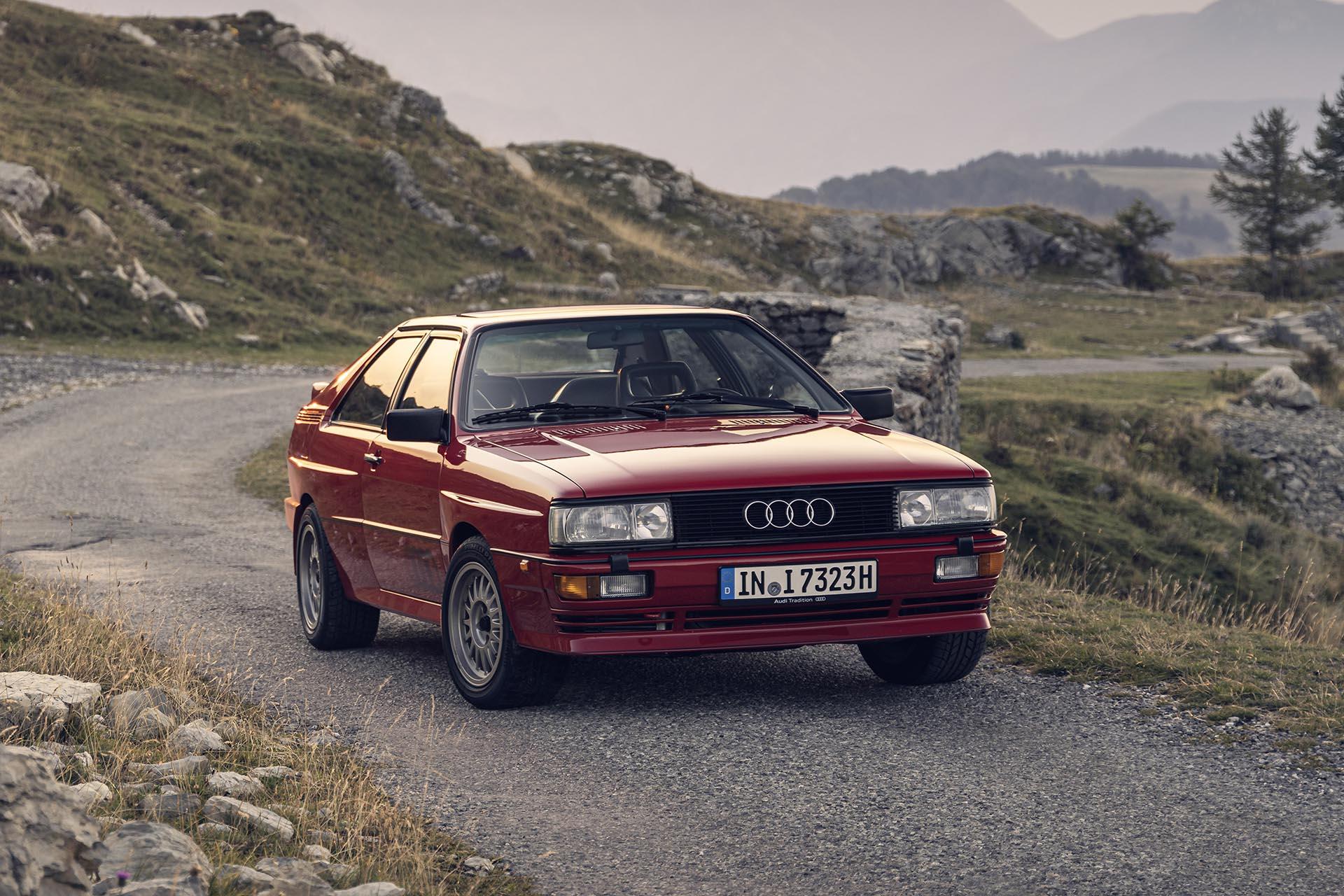

The old quattro is worth every praise | Photo: © Audi
There is more noise, the steering requires more force, the chassis is more focused and the brakes are sharper and firmer. You are looking at a digital dashboard with an infinitely cool block tachometer. And it's as if the engine has fought itself loose.
The engine of the Audi quattro sounds heavenly
Accelerating brings the typical five-cylinder howl that we love so much: raw, deep, melodious. On the 200 it was subtly present, but concealed – here it comes to the fore. The engine now produces 200 hp from 2.2 liters and propels the quattro to an impressive 222 km/h for that time. I'm afraid I don't even get close to half of that; the Col de Turini is not only tight and winding, it is now also shrouded in dark rain clouds.
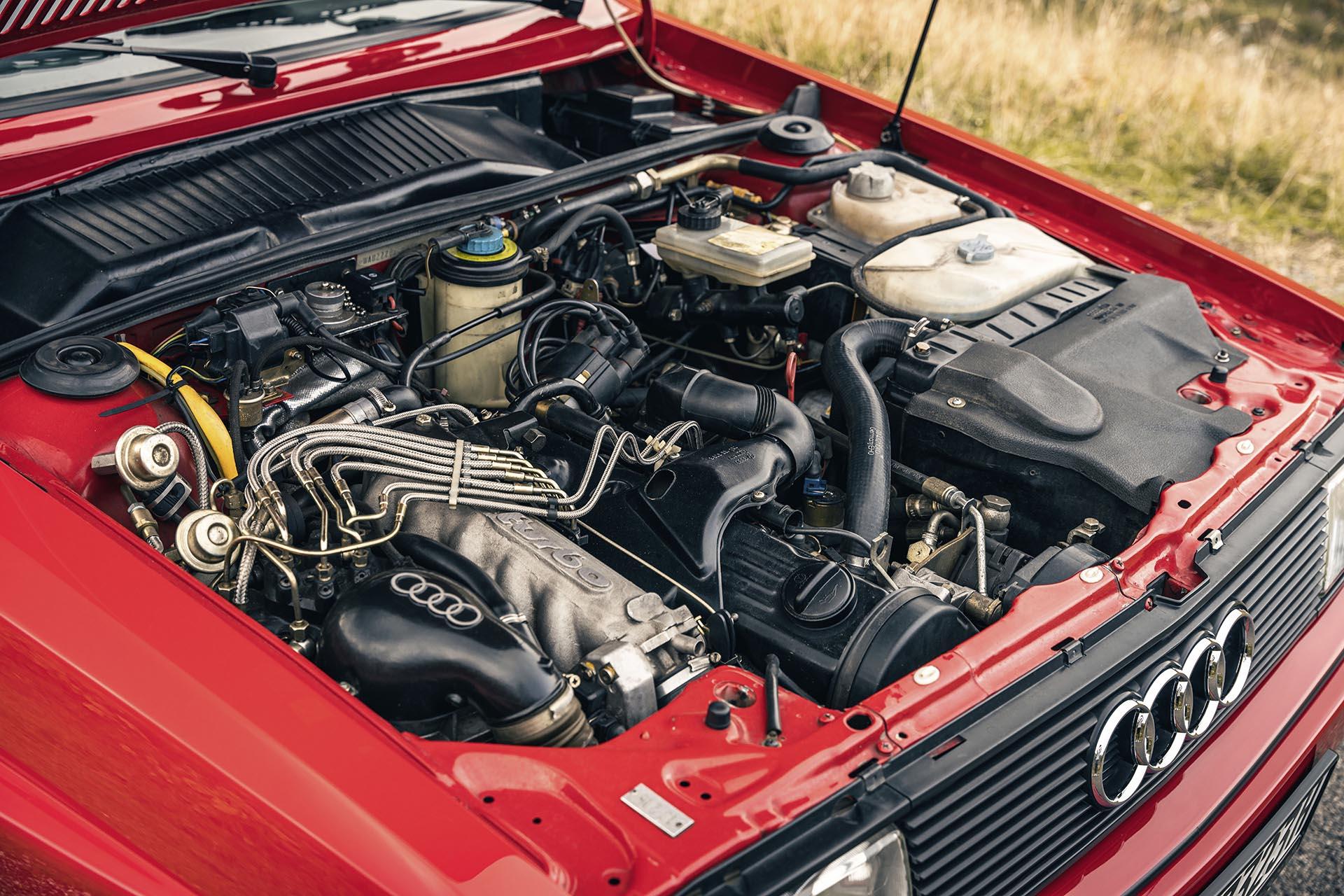

But the way you downshift in the quattro with the precise lever, how it helps you through the bend with an old-fashioned lean and then catapults you out with force and conviction on a wave of roaring turbo torque… Addictive is actually too mild a term.
Next to the prominent ashtray is a large DIFF button to adjust the drive to your preference. I have no idea what exactly he does – does he lock things down? Do you have to stand still to operate it, like old-fashioned off-roaders? To be on the safe side, I leave it alone during my short and wet ride.
At 1,300 kilos, the quattro is still not really heavy and its performance is close to modern. Within a few minutes it provides the complete confidence to go faster and faster, even in this dogged weather and taking into account the fact that I am sitting in a pristine Audi Tradition museum piece. I boost the engine to its turbosweet spot and let me be dragged along, grinning.
The next Audi quattro looks much younger than it is
More or less the successor to the quattro is the S2 from 1991, the third and last car that I have the privilege of taking care of today. Three years difference from the previous one, but it could just as well have been 30 years. This fast coupe version of the Audi 90 is much less hardcore. Yes, it has more power – 220 hp – and reaches a respectable top of 248 km/h, but as the brand becomes more luxurious, this S2 seems to consciously want to leave its gritty rally past behind.
The steering is little finger work, the clutch less intimidating, the degree of understeer even safer. The digital dashboard gave way to white gauges, the seats are deeper and more opulent. The whole thing is friendly and approachable, the kind of car that you can still use today without having the feeling that you are driving something from the distant past with every action.
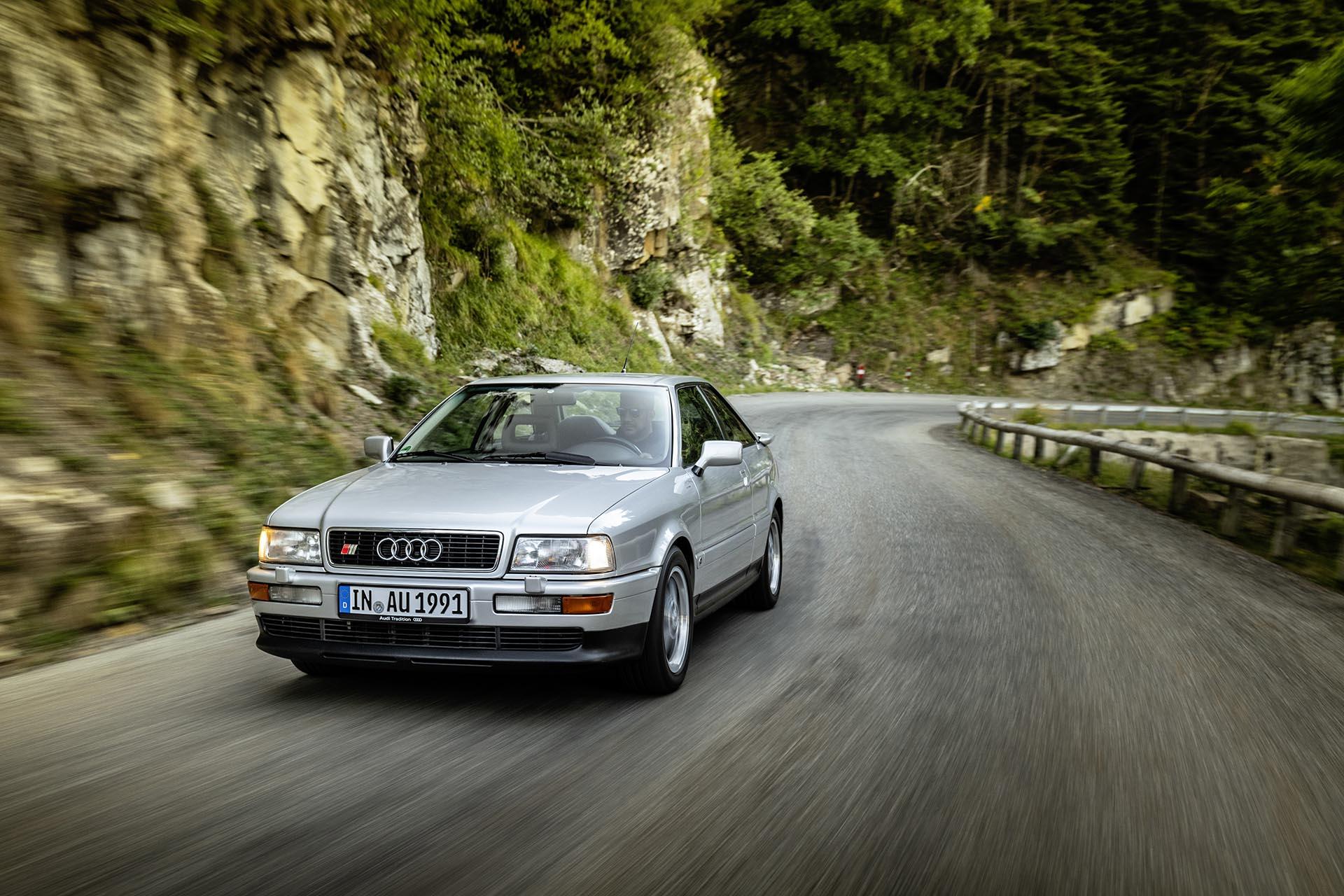

Of course it's fast, very fast. It's just a reassuring kind of speed, almost calming, as we know from modern Audis. The first production car to wear the S badge came almost at the same time as the first RS – the infamous RS 2 Avant – and clearly tries to stay far away from that intensity. It has proven to be a solid division, because it is precisely this character gap that separates the many subsequent S and RS models. If I, as a quattro driver, had test driven the new S2 in 1991, I'm not sure whether I would have considered a trade-in – the culture shock is immense.
Now on to the real thing: the Sport quattro S1
The next day I find myself 50 miles away in San Romolo, Italy, for the superlative of this Four Rings immersion. The square in the village smells of racing gasoline. Surrounded by caring specialists, the Sport quattro S1 is warming up: historic white and yellow, dressed in the sponsor stickers of the past and with six mega spotlights on its nose.


Walter Röhrl's name still appears on the composite front fenders; although none other than Stig Blomqvist walks by, in the correct uniform, with his helmet buckled on. The 75-year-old Swedish rally champion is quiet modesty himself. He smiles hello and settles behind the wheel of the S1. I sit in the passenger seat and am strapped into the five-point belt.
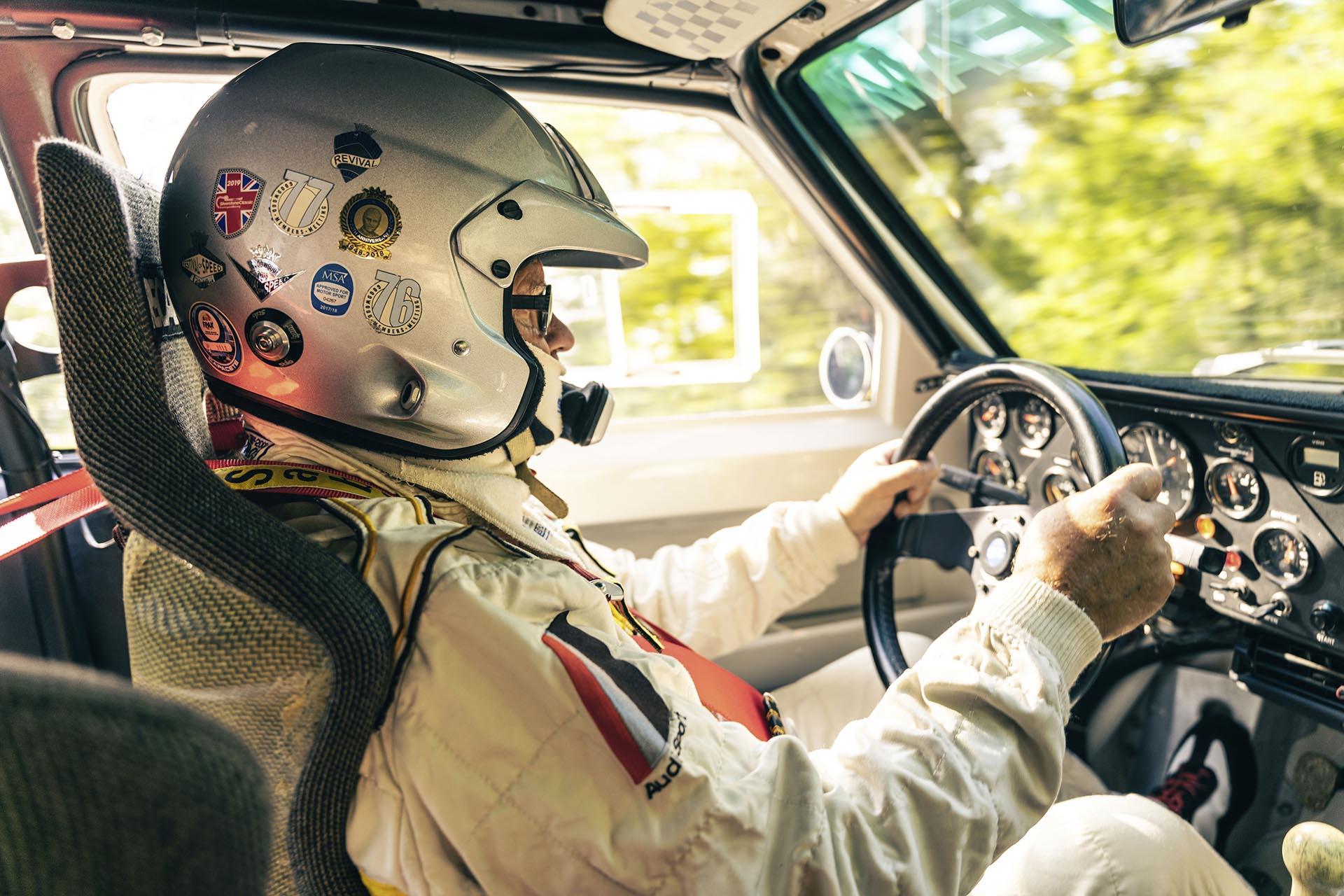

The SP56 runs from San Romolo to Baiardo, which has been closed off for the occasion – that is normal in Italy. In the opposite direction, this road formed stage 49 in the 1982 Rallye Sanremo, won by Blomqvist in an Audi like this. I was two weeks old at the time. Now I'm sitting next to him as he rolls out of the village, raises his hand to the officer at the barrier, downshifts and takes off at breakneck speed.
Stig Blomqvist behind the wheel of the Audi quattro
What follows flashes by and cannot be reconciled with what I see. The friendly old man next to me looks perfectly calm, his hands loosely on the steering wheel, as if he's chugging along to the supermarket on a Saturday morning. But the historic Audi clatters loudly over the broken asphalt and the 7,000-plus five-cylinder revolutions reverberate through the hollow and light body. I'm hanging on the seat belts when we hit the brakes and the little Pirellis dig in. I'm squeezed into the bucket seat as the quattro drive takes over and does its merciless work.
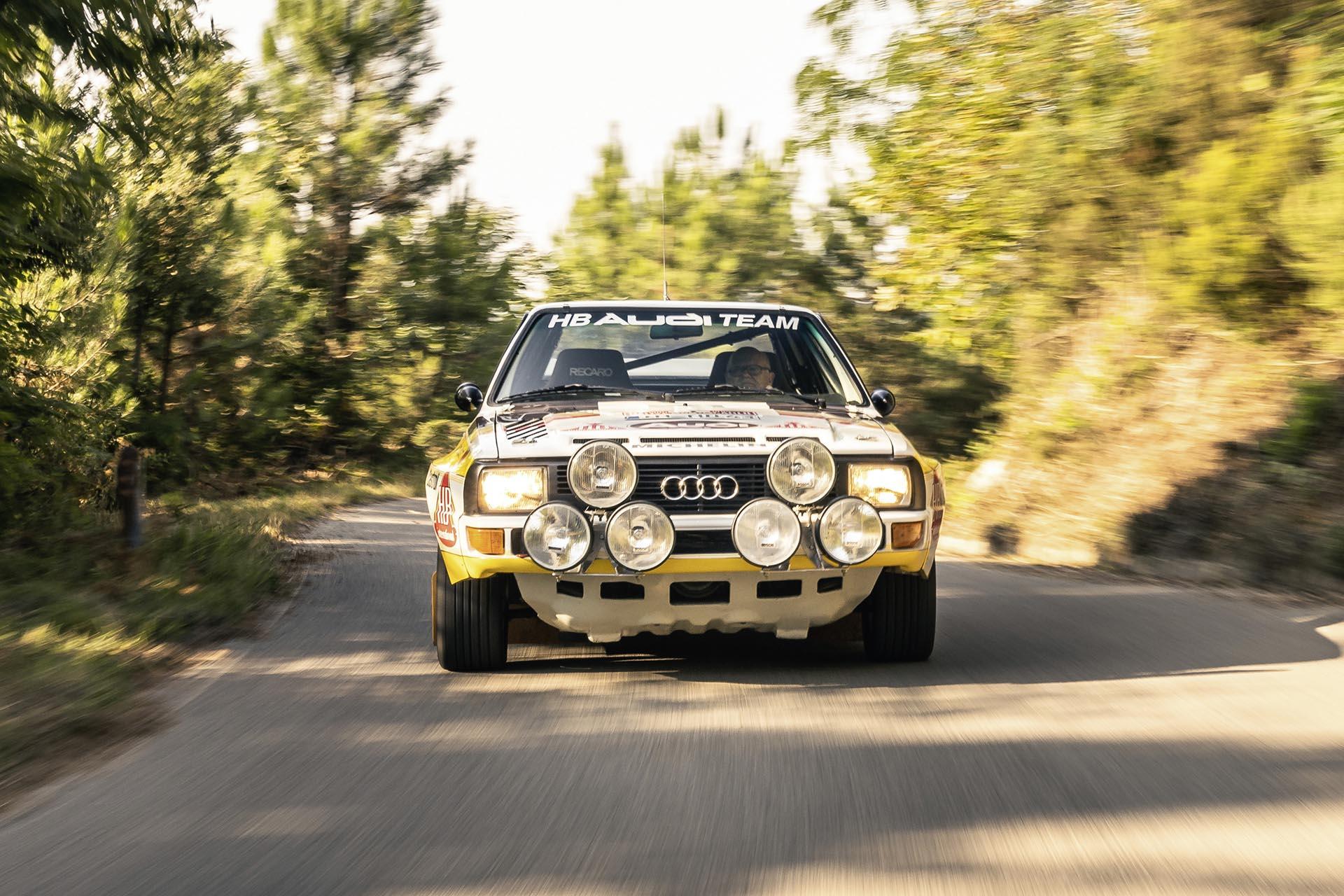

Dashboard meters shoot into a fit, sand drifts, pebbles clatter. The landscape rushes by, but I can barely keep my eyes off Blomqvist's feet. Very & close, left braking in corners – he tap-dances over the pedals as if he was competing yesterday. Meanwhile, the turbo sucks, whistles and flutters and the S1 scrabbles and claws its way up.
Then: a fence, a traffic controller and a few beaming locals who heard us coming from far away. Blomqvist returns and chases back down with just as much enthusiasm. The man is a legend, but so is this technique. And even if in twenty years I only spot the quattro badge on electric cars, I, my ears and my ribs will remember it happily.
#Driving #beautiful #fivecylinder #quattros #Audi #offer
